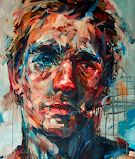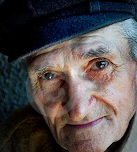"The idea that the dead often don’t initially realize they are dead is universal. While many near-death, out of-body, and postmortem narratives describe the newly dead person floating off almost immediately into other dimensions like the Reverend Bertrand did, others linger longer on the old familiar earth, or what at least feels like the old familiar earth. In these kinds of narrative, the individual wanders about the earthly world, going through doorways, walking down roads, only gradually finding him or herself in a world that, though it still looks familiar, is clearly no longer the exact physical world they were in while alive.
"When, exactly, does the world the individual is moving it shift frequencies? It’s an all but impossible question to answer from our perspective, but the concept of the imaginal allows us to conceive of a consciousness that seamlessly transforms from the earthly to the transearthly, filling in the perceptual picture in essentially the same manner thar our minds fill in the picture in ordinary life. Everyone knows the experience of seeing an object that one thinks is one thing only to then discover that it is something else. Driving along the highway, we see a small brown animal, struck but not killed by a passing car. The closer we come, the most details of the struggling animal we see—and the clearer it becomes that it is indeed just that . . . until we are so close that the object resolves into what it really is, and has been all along: a brown paper bag, moving from the wind created by passing cars.
"Experiences like that remind us that our minds are constantly creating our reality, constantly taking creative/interpretive liberties with the raw material coming in via the optic nerve and the rest of our senses. So, to see this process of collaborative creation continuing all but seamlessly as our consciousness shifts vibrational levels is really not so far-fetched at all. Oblivious to the fact that they are no longer in their physical bodies, the newly dead proceed through the outskirts of the afterlife landscape as if they were still alive—only gradually coming to realize that they are no longer fully part of the physical dimension."
Ptolemy Tompkins, The Modern Book of the Dead (Atria Books, 2012), 216-17.










